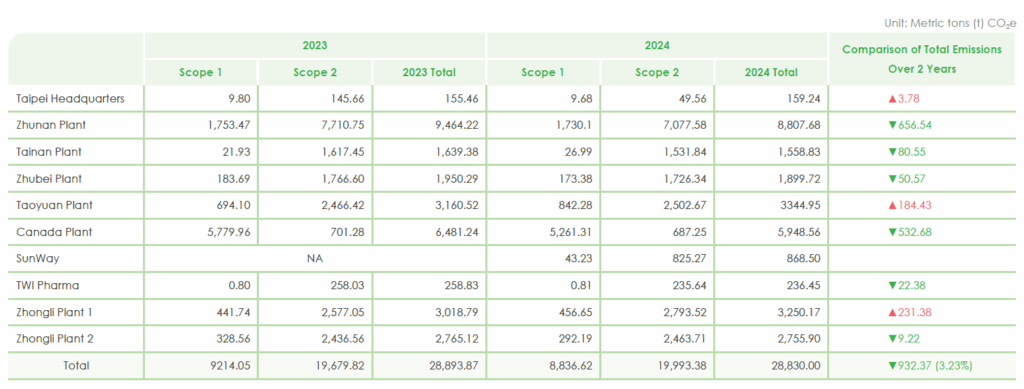Bora recognizes the growing challenges and responsibilities brought by climate change and is committed to reducing greenhouse gas emissions. Aligned with the TCFD framework, we disclose our governance, strategies, and risk management practices related to climate issues. Each year, we conduct carbon inventories, develop carbon reduction plans, and implement targeted actions to lower our operational carbon footprint. These efforts not only meet market stakeholder and customer expectations but also enhance our long-term competitiveness.
Environmental Objectives and Policy
A. Environmental Goal
- In response to the global push for net-zero emissions by 2050, Bora Group has made energy saving and carbon reduction a core objective. We are committed to mitigating the impacts of climate change while promoting environmental protection and sustainable development.
- Starting in 2025, we implement the ISO-14001 environmental management system to establish a comprehensive, top-down approach to managing environmental, safety, and health policies.
B. Environmental Policy
- Conduct carbon inventories and disclose emissions data across all subsidiaries.
- Use the carbon inventory system to identify reduction opportunities across internal and external operations.
- Promote green supply chains for consumers and customers.
- Consider product life cycle foot points, from raw materials to disposal.
C. Our Goals
| Term | Goal |
|---|---|
| 2025-2030 Short-term goals |
|
| 2031-2040 Mid-term goals |
|
| 2041-2050 Long-term goal |
|
Greenhouse Gas Emissions
Since 2021, Bora has adopted the ISO 14064-1:2018 greenhouse gas (GHG) inventory standard and engaged a third-party organization for annual verification. We have successfully obtained verification certificates for 3 consecutive years. Starting in 2023, we used GHG emissions data as the baseline for setting reduction targets and will continue implementing carbon reduction measures across our operations.
Compared to 2022, Bora’s 2023 GHG emissions showed noticeable changes. The increase was mainly driven by:
- Inclusion of the Zhubei and Zhongli Plant 1 and 2 facilities.
- Expanded emissions calculation boundaries.
- Shifts in production scale.
All emissions from newly integrated facilities have been fully accounted for in 2023, Sunway Biotech, which was integrated into Bora at the end of 2023, is still undergoing data integration and will be included in the 2024 report.
Energy Management
Bora is committed to reducing overall energy consumption to lower carbon dioxide emissions. The main energy sources across the Bora Group are purchased electricity and natural gas. We do not use heavy oil or diesel. Electricity powers chiller units, air conditioning systems, and production equipment within our facilities. Natural gas is primarily used for gas boilers.
Energy Consumption (GJ)
| Energy Type | 2023 | 2024 |
|---|---|---|
| Purchased Electricity | 222,447.73 | 229,080.47 |
| Gasoline | 106.79 | 126.79 |
| Diesel | 260.21 | 449.76 |
| Natural Gas | 149,188.69 | 127,119.67 |
| LPG | 531.54 | 610.63 |
| Total | 372,534.96 | 357,387.32 |
Fulfilling Environmental Commitments
| Year | Factory/Plant | Resources Invested | Achievements/Results |
|---|---|---|---|
| 2024 | Zhunan Facility | NTD 430,000 | By adjusting and optimizing the operation of the air conditioning system within the plant—such as modifying airflow for parallel operation, adjusting air exchange rates and dust collection airflow, and altering the operating frequency of cooling towers—we successfully reduced electricity consumption. Compared to 2023, the plant’s total electricity usage decreased by 811,600 kWh, representing a 6.62% reduction. Simultaneously, carbon emissions were reduced by 481 tons of CO2e, equivalent to an annual emission reduction of 5.48%. |
| 2024 | Tainan Facility | NTD 75,000 | By installing energy-saving devices on the adsorption dryer and completing installation and testing in April 2024, the Tainan plant successfully reduced its total electricity consumption by 4.63% from May onwards compared to 2023. This equates to a reduction of 8.3 tons of CO2e. |


